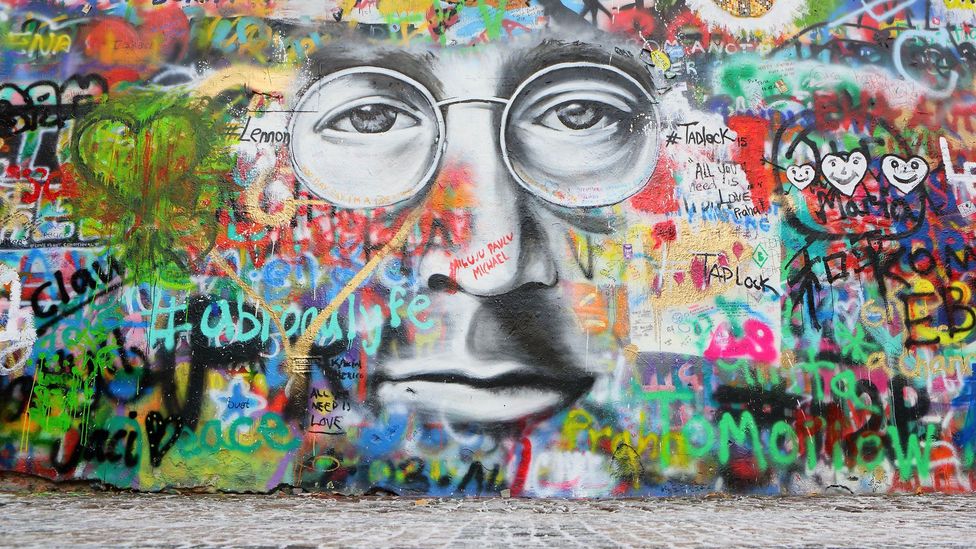In this case, it explored what might have happened when Lennon and the Beatles’ manager Brian Epstein spent a weekend in Barcelona in 1963, and presented the episode as a story of tender yet forbidden love between the two. Was it grounded in any reality? In 2015, Yoko Ono said in an interview that Lennon saw bisexuality as natural while Lennon himself said that his relationship with Epstein was “almost a love affair, but not quite. It was never consummated”.
Kevin Barry’s 2015 novel Beatlebone treads a similar speculative path, looking at Lennon’s actual trip to the West coast of Ireland in 1978, and highly fictionalising it into a story about him taking part in primal screaming therapy to “at last be over himself”. Beatlebone takes place two years before Lennon’s death, and Sheffield says the premise is emotionally convincing in that he might have had a lot to get over at that point in time. “A theme of his final interviews is how hard John was struggling in his adult life to purge the misogyny that he’d inherited, and to learn a way of being an adult male that wasn’t rooted in misogyny,” he says. “He wasn’t trying to excuse his past behaviour; he was trying to understand it so he could leave it behind. And he was talking about it in public so (male) kids like me could understand we didn’t have to grow up making the same mistakes he did. I was just a little kid when he died, but John was one of the only adult males I saw out there talking openly about feminism. It’s a huge reason I looked up to him.”
More evidently factual, and the most high-profile among the various Lennon narratives, is Sam Taylor-Wood’s 2009 film Nowhere Boy, which chronicles his younger life and his relationship with his mother Julia and aunt Mimi. Like scholars picking over the childhood of Buddha, we want to understand how Lennon became the man he did, but there’s also a purity to this portrayal because it presents Lennon before the prism of fame split him into his kaleidoscopic multitude of facets that allowed artists to imprint their own ideas of what John Lennon was or should have been.
Lennon as fantasy figure
Not all portrayals of Lennon in fiction have aimed for a realistic examination of his life with or without the Beatles. In author and film critic Kim Newman’s Anno Dracula novels, which posit a world where the vampiric count marries Queen Victoria and supernatural creatures live openly alongside mortals, Lennon is referenced as being the leader of the Labour Party (and a vampire, to boot). He can even be found in the Marvel comic book universe, via the character of John The Skrull a member of the shapeshifting alien race created by writer Paul Cornell, who routinely takes the appearance of Lennon.
Both foreground different aspects of the multi-faceted Lennon persona. With Newman’s books, he’s literally turned into the ultimate incarnation of his own 1970 song Working Class Hero. Meanwhile Cornell tells BBC Culture he “wanted someone who’d look at super heroes and couldn’t quite join in, but instead stood back and made sarcastic and not always helpful comments. Lennon would be the most likely to do that.”
That’s not his only appearance in comics: Scottish writer Grant Morrison’s cult 1990s Vertigo series The Invisibles presented Lennon as an actual pop cultural, god-like manifestation (possibly of the Hindu god Ganesh), as well as a time-slip moment in which the young Scouse protagonist Dane McGowan, sees Lennon and Stuart Sutcliffe talking about Sutcliffe leaving the Beatles.
“Morrison’s making an interesting point that Lennon has actually become a mystical character now,” says Quantick. “He’s achieved that level where people are using him in magical rituals because of who they think he was.”
Nor was that the first time Morrison had referenced Lennon’s impact on the collective psyche of humanity. In his 1990 comic St Swithin’s Day, a disaffected youth sets out to assassinate Margaret Thatcher. He buys a copy of JD Salinger’s The Catcher In the Rye for them to find in his pocket afterwards – just like Lennon’s killer Mark Chapman did. In the end, the character disposes of his book, not wanting his plot to be over-analysed.





